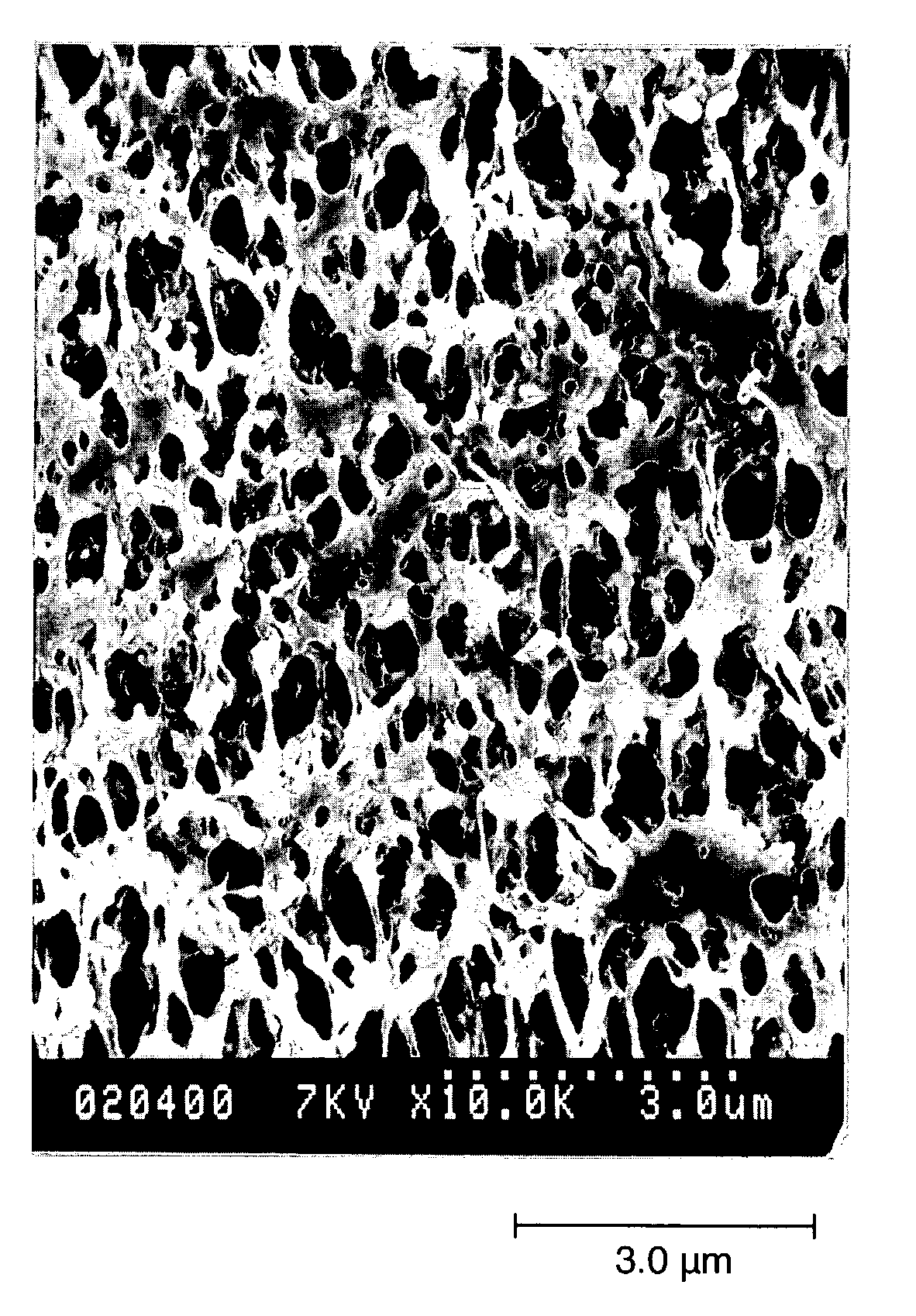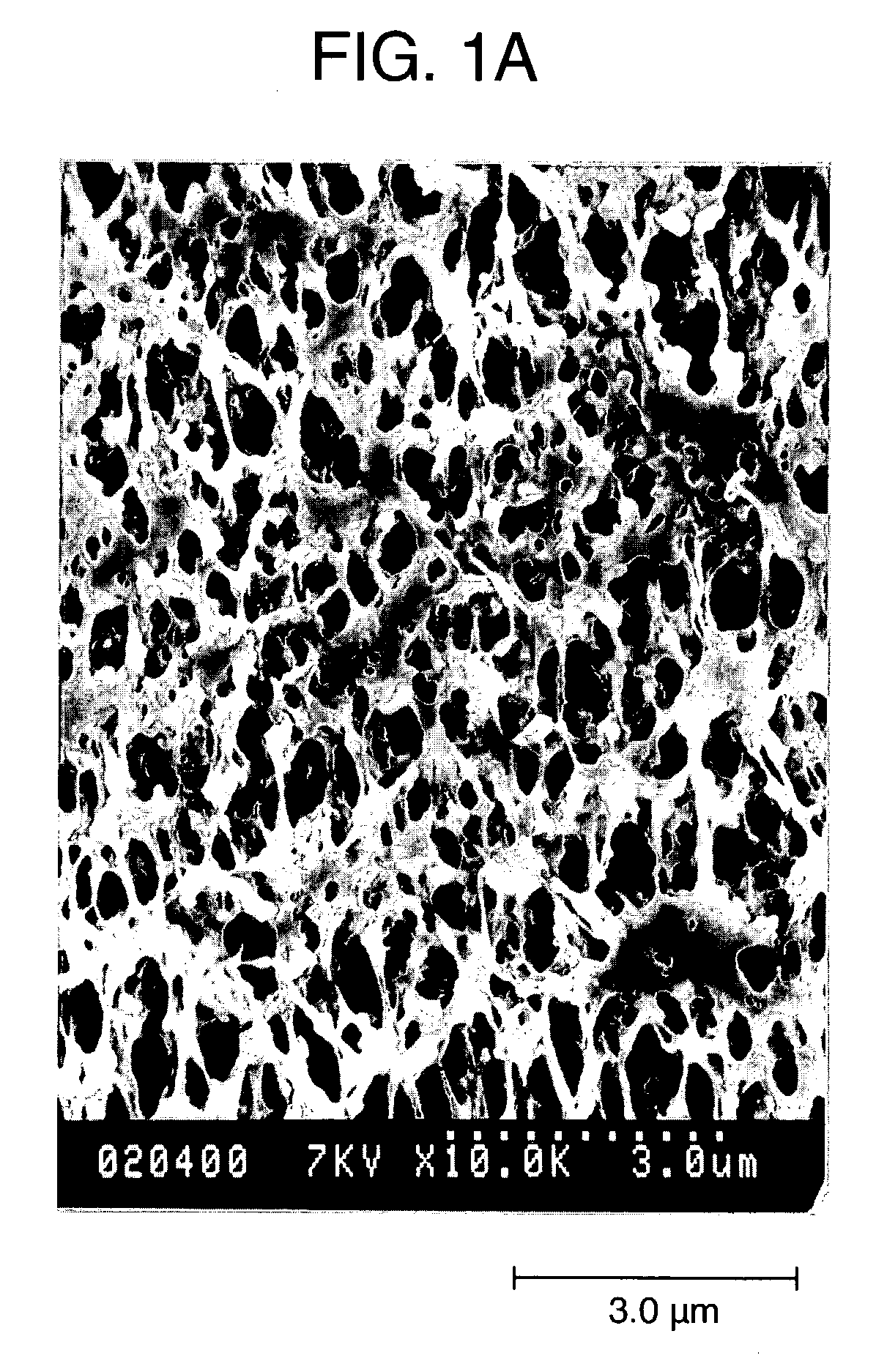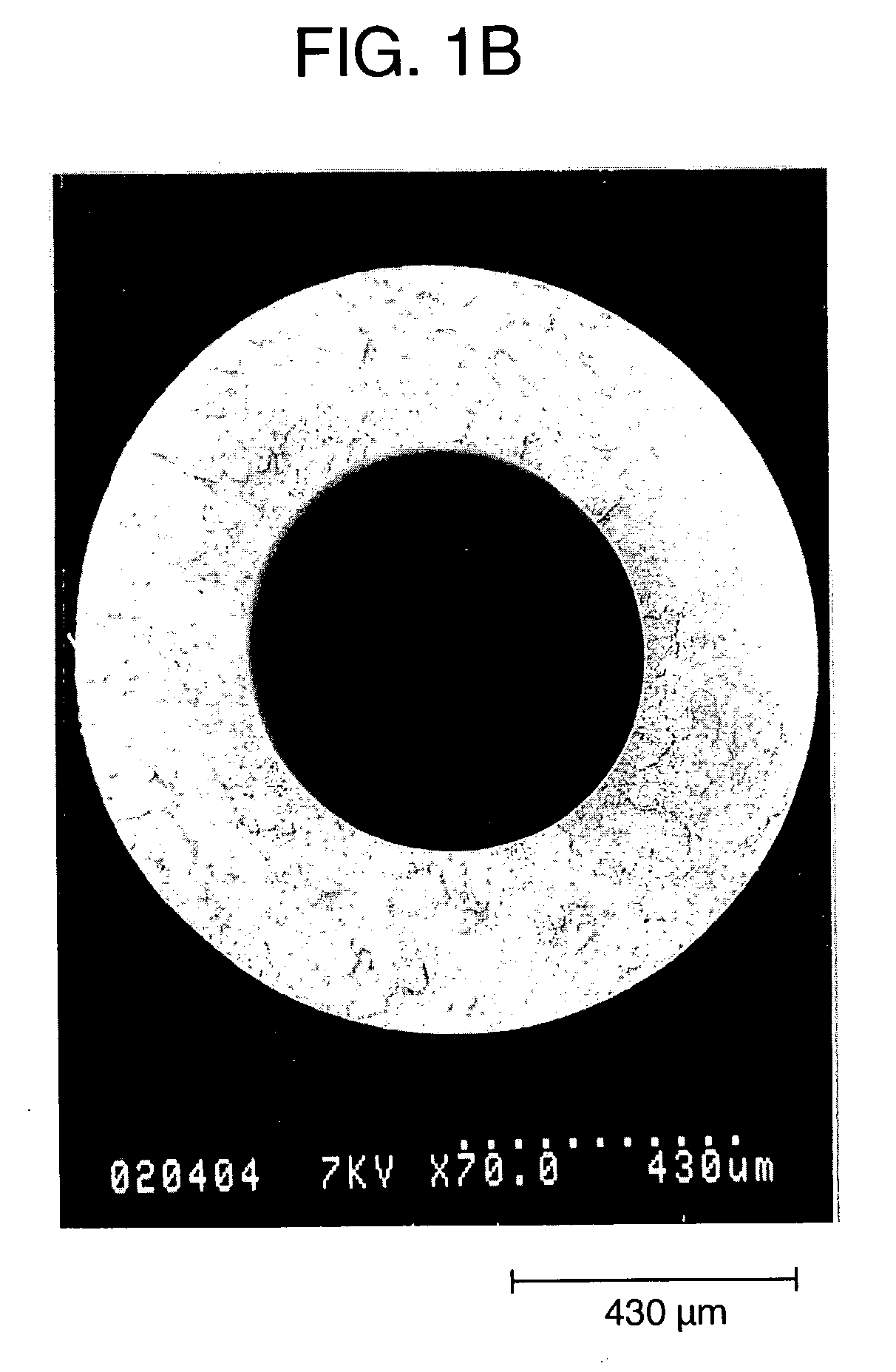Method for producing hollow yarn film
a hollow yarn and film technology, applied in the direction of packaging, filament/thread forming, fastening means, etc., can solve the problems of insufficient water permeation performance, stains are deposited on the membrane, and the water permeation performance is not satisfactory, so as to achieve excellent repeated fatigue resistance, small shaking effect of fibers, and high resistance to marring
- Summary
- Abstract
- Description
- Claims
- Application Information
AI Technical Summary
Benefits of technology
Problems solved by technology
Method used
Image
Examples
example 1
[0127] 23% by weight of hydrophobic silica having an average primary particle diameter of 0.016 .mu.m and a specific surface area of 110 m.sup.2 / g (AEROSIL-R972 (trademark) manufactured by Japan Aerosil Co., Ltd.), 30.8% by weight of dioctyl phthalate and 6.2% by weight of dibutyl phthalate (SP of mixture of these two compounds: 18.59 (MPa).sup.1 / 2) were mixed by a Henschel mixer, and to the mixture was added 40% by weight of polyvinylidene fluoride having a weight-average molecular weight of 290000 (KF polymer #1000 (trademark) manufactured by Kureha Chemical Industry Co., Ltd.), followed by further mixing by a Henschel mixer.
[0128] The resulting mixture was further melt kneaded by a 48 mm.phi. twin-screw extruder to prepare pellets. The pellets were continuously introduced into a 30 mm.phi. twin-screw extruder and melt extruded from a circular ring nozzle attached at the tip of the extruder at 240.degree. C. while supplying air into the hollow portion. The extruded product was pas...
example 2
[0131] Hollow fiber membranes were obtained in the same manner as in Example 1, except that after being drawn and leaving the second heating bath (0.8 m in length) adjusted to a space temperature of 80.degree. C., the hollow fibers were continuously passed between a pair of rugged rolls with four crests which had a peripheral length of about 0.20 m and were positioned on the water surface of a cooling water bath of 20.degree. C. at a rotational speed of 170 rpm, whereby the hollow fibers were cooled while being periodically bent, and thereafter the hollow fibers were taken off at a speed of 30 m / min by the third infinite track type belt take-off machine and were subjected to extraction and drying, followed by heat-treating the dried hollow fiber membranes at 140.degree. C. for 2 hours in an oven. The amount of silica remaining in the membranes was 0.4% by weight.
[0132] The resulting hollow fiber membranes after being subjected to the heat treatment had an outer diameter of 1.22 mm, ...
example 3
[0134] Hollow fiber membranes were obtained in the same manner as in Example 2, except that a polyvinylidene fluoride polymer having a weight-average molecular weight of 310000 (Solef 6010 (trademark) manufactured by SOLVAY Co.) was used as the polyvinylidene fluoride polymer. The amount of silica remaining in the membrane was 0.4% by weight.
[0135] The resulting hollow fiber membranes after being subjected to the heat treatment had an outer diameter of 1.22 mm, an inner diameter of 0.66 mm, a porosity of 72%, an average pore diameter of 0.27 .mu.m measured by the half-dry method, a maximum pore diameter of 0.35 .mu.m measured by the bubble point method, a ratio of the maximum pore diameter and the average pore diameter of 1.30, and a pure water permeation rate of 4700 L / (m.sup.2.multidot.hr). The membranes had a tensile break strength of 8.9 MPa, a tensile break elongation of 130%, a tensile modulus of 37 MPa, a compressive modulus of 4.4 MPa, and an instantaneous compressive streng...
PUM
| Property | Measurement | Unit |
|---|---|---|
| Angle | aaaaa | aaaaa |
| Angle | aaaaa | aaaaa |
| Shrinkage | aaaaa | aaaaa |
Abstract
Description
Claims
Application Information
 Login to View More
Login to View More - R&D
- Intellectual Property
- Life Sciences
- Materials
- Tech Scout
- Unparalleled Data Quality
- Higher Quality Content
- 60% Fewer Hallucinations
Browse by: Latest US Patents, China's latest patents, Technical Efficacy Thesaurus, Application Domain, Technology Topic, Popular Technical Reports.
© 2025 PatSnap. All rights reserved.Legal|Privacy policy|Modern Slavery Act Transparency Statement|Sitemap|About US| Contact US: help@patsnap.com



